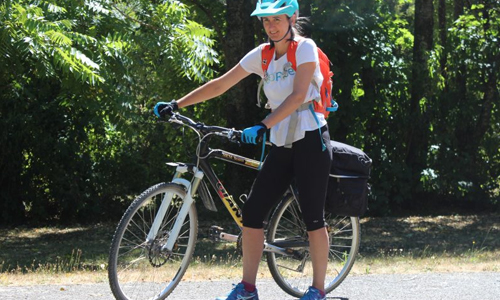Soft Tissue Compression on your Bike Saddle
Your saddle is a very important contact point with your bike. It should provide the support & comfort you need to ride for as long as you like. Problems with compression of soft tissues can really restrict you from enjoying your bike.
Supporting you to SMILE when you ride.
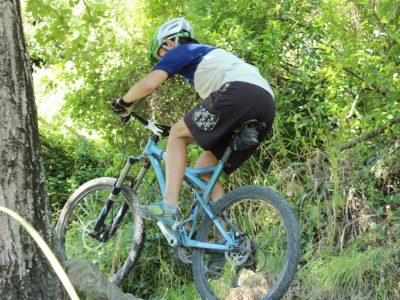
What Causes Compression Issues?
Time on the bike is a big factor in this one. You may have no issues at the front of your genital area with short rides but as you sit there for longer discomfort becomes apparent and may turn into chaffing, burning, extreme pressure, numbness or pain. Some women are lucky and will never have a problem in this particular area as everyone is made differently so the shape and amount of tissue will be different from body to body. Your experience will be unique to you. Don’t put up with any odd feelings. On going compression of nerves, bleeding or burning can lead to permanent damage.
The more upright your body position on the bike the more weight will be transferred directly down into your sit bones. As you lean forward this weight gets distributed forward along your pelvic bones so any soft tissue that is in the way will begin to get squashed. This area of your body has not been designed to take this weight or pressure. This makes genital problems more common in forward bent riding positions.
To take this problem even further some riders out there experience pubic bone bruising. This is usually only in prolonged periods of extreme forward bent riding. A “Split Nose Saddle” can help, along with increasing the strength of your lower abdominal muscles.
How to Reduce Soft Tissue Compression Problems
Saddle Set Up – how your saddle is set up effects your ability to sit on it. Make some adjustments to see if you can help resolve your issue. A lot of riders who experience genital discomfort benefit from a slight forward tilt or nose down saddle position, please don’t over do this, the word is slight. Please read… Saddle Position – Height, Tilt and Reach
Saddle Shape – what is known as a cut out will definitely help alleviate compression. This is a hole cut into the middle of your saddle. Endurance saddles tend to have the widest cut outs and therefore offer the best relief.
Saddle Padding – soft, well padded saddles suit short distances. If you have increased your riding time and started to experience soft tissue compression this may be because you are sinking too far into your saddle, usually around 30-45 minutes into the ride. A saddle with a flatter surface and less padding or gel padding is a better choice for endurance riding.
Padding – it may seem counter intuitive but less padding in your chamois has been shown to help with genital compression. So try more minimal style padding that you can’t sink into and is not competing for or taking up space that your tissue wants.
Handlebar Height – another bike adjustment to consider especially if you would consider yourself to be a more of a recreation rider, is to raise the height of your handlebars. Again small adjustments can have big results. If you are on a road bike with drop bars, rotating your brake hoods up and back can be helpful.
Chamois Cream – using chamois cream on your genital area when riding reduces friction and may help with pressure points.
Other Ways to Improve Comfort
To follow is a short list of suggestions that you can choose to explore or ignore. For weight transfer issues that cause pressure, bruising or discomfort:
- Be very mindful of your body position and shifting it when riding
- Improve the strength of your core muscles and legs
- Lose weight; get bags or packs off your back and acknowledge that if you are over weight this will be adding to your problem
- Let a small amount of air out of your tyres on bumpy surfaces this allows the tyre to absorb some of the impact
- Get up out of your saddle (stand on your pedals) when going over bumps, dips or uneven surfaces
- Choose shorter rides
- Choose rides with varying terrain which will change your bodies experience during the ride

Correct technique is a large part of being comfortable when you ride
Comfort & Contact Points
Your comfort while riding is a huge part of enjoying your time on the bike. It will also keep you protected & safe. There are three key points where you make contact with your bike. The seat, the handlebars and the pedals. It is important to understand how to position your body between these points
For more information see the following stories:
- ‘A’ Body Position on the Bike
- Correct Pedalling Technique


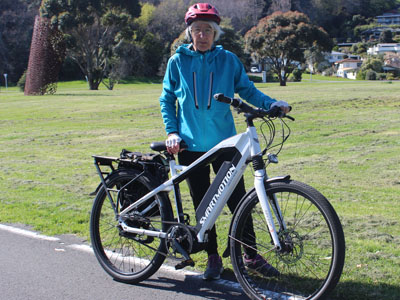
Your bike riding success is different to others… use our stories and support, get the right solutions.

Bike seat Comfort
Full range of comfort on the bike seat stories on one easy to navigate page.
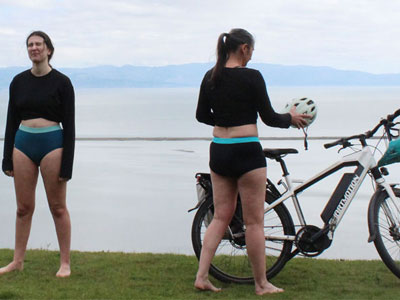
goUnders
Learn about goUnders Padded Bike Underwear by goRide

Time on an E-Bike
Riding an E-Bike provides you with assist to ride further and faster. Can your body cope with increased time on the bike.
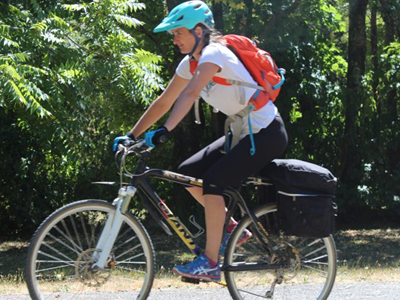
Guide to Riding for Longer
A fantastic goal to have is to be able to ride for longer…there are so many benefits and it opens up what you could achieve on a bike.

Bike Seat Sweet Spot
The position of your saddle can effect your comfort when you ride. Learn about saddle position.

Womens Saddle Buying Guide
Learn what to consider when buying a Bike Saddle.

A Gel Cover or Not?
Learn how to use a Bike Seat Gel Cover and understand if it is a comfort solution for you?
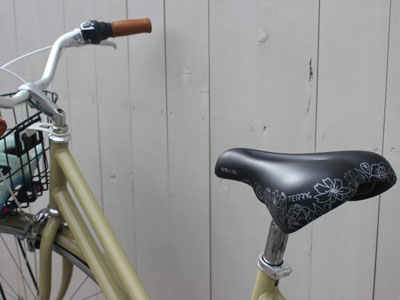
How to Break a New Saddle In
Your body needs to adjust to a new saddle… do not expect to get a new saddle and immediately be able to go for long rides.

How to Adjust your Bike Saddle
Learn how to make minor adjustments to the position of your bike saddle so you improve your comfort on your bike seat.
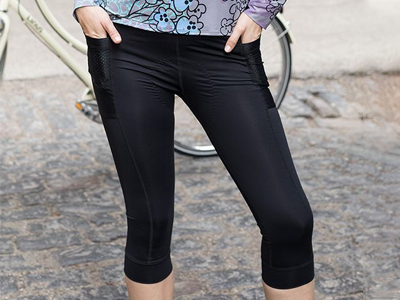
Padded Bike Pants
Should you be wearing padded bike pants or padded bike underwear to help with comfort on your bike seat?
Want more from your riding?
Be supported to Ride as a Family, Progress Your Riding and/or receive Seasonal Inspiration. So you can SMILE when you ride.
All new members are automatically entered into our Seasonal Prize Draw.
SMILE when you ride
Support & Inspire other riders and families
Share your riding outings, adventures and experiences on our quick and easy question and answer forms. Join us in helping others ride bikes.
All entries are automatically entered into our Seasonal Prize Draw.
Women
Padded Bike Underwear
Pants for Biking
Tops for Biking
Jackets & Over Trousers for Biking
Riding Clothing for Larger Sizes
Warmth Accessories
Bike Saddles
Bike Helmets
Mountain Bike Helmets
Bike Gloves
Protective Padding
Bike Bells
Hydration
Handlebar Grips
Kids & Youth
Padded Bike Underwear
Bike Helmets
Mountain Bike Helmets
Riding Clothing
Jackets for Biking/Outdoors
Protective Padding
Bike Gloves
Bike Lights
Bike Bells
Handlebar Grips
Bike Saddle
Bike Locks
Hydration
Family
Ride with a baby/ 1 year old
Ride with a 2-6 year old
Ride with a 4 + year old – on their own bike
Full Range Kids Bike Seats – Attached or Towed
Create a Family Biking Holiday
Ride More Places with Kids
Men
Padded Bike Underwear
Bike Helmets
Mountain Bike Helmets
Bike Saddles
Bike Tops,Jackets & Over Trousers
Bike Gloves
Protective Padding
Handlebar Grips
Bike Bell
Be comfortable & confident
Successfully Ride an E-Bike
Beginner Rider
Heavy Riders – Enjoy Biking
Be Comfortable on your Bike Seat
Riding in Cooler Weather
Riding in Wet Conditions
Be Visible on the Bike
Enjoy a Biking Holiday
‘Fun Up’ the Kids Bike/Biking
goUnders- Padded Bike Underwear
Women, Mens, Youth & Kids

SHOP goUnders.
Clothing & Bags
Padded Bike Pants & Underwear
Pants & Shorts for Biking
Bike Tops
Bike Jackets
Over Trousers for Biking
Headbands & Neck Warmers for Biking
Bags, Baskets & Panniers for Biking
Rider Safety & Protection
Bike Helmets
Mountain Bike Helmets
Bike Gloves
Protective Padding
Bike Lights
Bike Bells
First Aid & Personal Care
Hydration
Bike Tow Ropes
Bike Parts & Care
Bike Saddles
Handlebar Grips
Bike Locks
Bike Carriers
Bike & Chain Cleaning
Bike Tools & Tool Kits to Carry
Kids Bike Seats & Bikes
Rear Kids Bike Seats
Mid Kids Bike Seats
Front Kids Bike Seats
Towing Kids who ride their own Bike
Bike Trailers for Kids
Kids Balance Bikes
HIRE Kids Bike Seats
Be Comfortable & Confident
Comfort on your Bike Seat
Be Visible on the Bike
Beginner Riders
Get Started – Ride with a baby
Heavy Riders – Enjoy Biking
Riding in Cooler Weather
Riding in Wet Conditions
‘Fun Up’ the Kids Bike/Biking
Bike Path Riding
Beginner to Fitness
Multi-Day
With Kids of all Ages
Kids Riding Bikepaths
Multi-Day with Kids
Bike Path Riding Guide
Ride more Bikepaths
Mountain Biking
Women Beginner to Intermediate
Men Beginner to Intermediate
Multi-Day
With Kids of all ages
Kids Mountain Biking
Multi-Day with Kids
Mountain Biking Guide
Ride more Mountain Bike Trails
Riding in Traffic
Be Visible in Traffic
Commuting
With Kids of all Ages
Kids Riding in Traffic
E – Biking
E-Biking in Traffic
E-Biking on Bikepaths
E-Biking on MTB Trails
A Biking Holiday
E-Biking Guide
Multi-Day Riding
Multi-Day on Bike Paths
Multi-Day on MTB Trails
Multi-Day with Kids on Bike Paths
Multi-Day with Kids on MTB Trails
Multi-Day Guide
A Biking Holiday
Family Biking Holiday
Ride more Multi-Day Rides
Family Riding
Full Range Kids Bike Seats – Attached or Towed
On Bikepaths with Kids
MTB with Kids
In Traffic with Kids
Family Biking Holiday
Family Riding Guide
Ride More Places with Kids
Kids Attached or Towed Buying Guides
Rear Kids Bike Seat
Mid Mount Kids Bike Seat
Front Kids Bike Seat
Towing Kids who ride their own bikes
Kids Bike Trailers
Kids & Youth Buying Guides
Kids Bike Helmets
Kids Riding Clothing
Kids Padded Bike Pants
Kids Padded Protection
Kids Handlebar Grips
Kids Balance Bike
Comfort on the Bike Buying Guides
Womens Bike Saddle
Mens Bike Saddle
Padded Bike Pants
Bike Jackets
Carrying Gear
Handlebar Grip
Hydration
Rider Safety Buying Guides
Bike Helmet
Mountain Bike Helmet
Protective Padding
Be Visible
Bike Glove
Bike Light
Mountain Bike Light
First Aid & Personal Care
Gear & Care for Bikes Buying Guides
Bike Carriers
Bike Cleaning
Bike Locks
Chain Cleaning and Lube
goUnders- Padded Bike Underwear
Women, Mens, Youth & Kids

SHOP goUnders.
Women & Families Learning
Comfort on your Bike Seat
Clothing for Biking
Family Biking
Improve your Riding
Carrying Gear
Care for ‘you’
Care for your Bike
Ride More Places
Ride more Bikepaths
Ride more NZ Cycle Trails
Ride more Mountain Bike Trails
Ride more Multi-Day Rides
Ride more Places with Kids
Riding Gear
Bike Helmets
Bike Saddles
Padded Bike Underwear & Pants
Bike Gloves
Bike Jackets
Protective Padding
Bike Locks
Bike Lights
Bike Tools to Carry
Handlebar Grips
Bike and Chain Cleaning
Kids Bike Seats & Bikes
Kids Bike Trailer
Towing kids who ride their own bike
Rear Kids Bike Seats
Mid Mount Kids Bike Seats
Front Kids Bike Seats
Balance Bike
Types of Riding
Bikepath Riding
Family Riding
E-Bike Riding
goUnders- Padded Bike Underwear
Women, Mens, Youth & Kids

SHOP goUnders.

